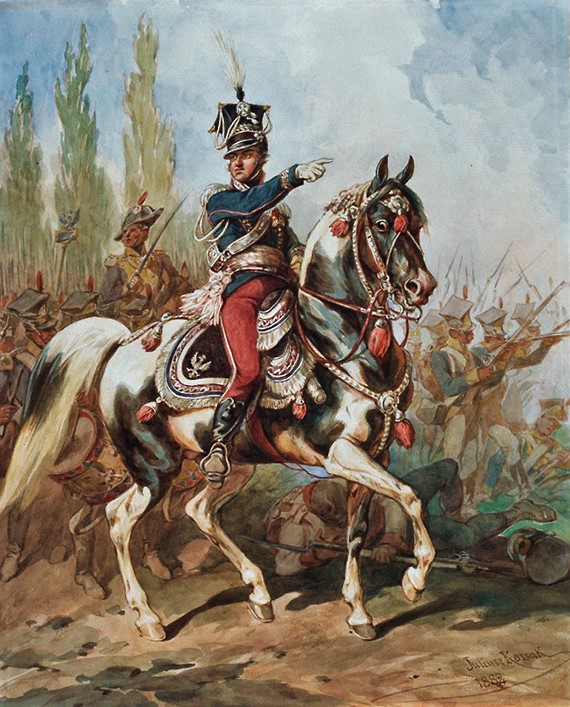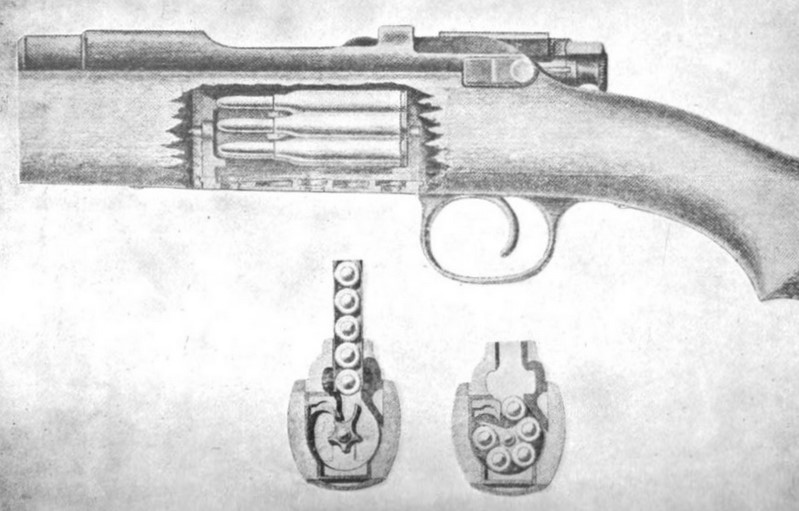|
Drużyny Strzeleckie
The Polish Rifle Squads () was a Polish pro-independence paramilitary organization, founded in 1911 by the Youth Independence Organization in the Austro-Hungarian sector of partitioned Poland. Among its founders were Norwid Neugebauer, Marian Januszajtis-Żegota, Henryk Bagiński and Eugeniusz Homer. The organization was similar in spirit to, and closely cooperated with, the Riflemen's Association. It too was supported by the Austro-Hungarian government, which wanted to raise a Polish army for use in World War I. By 1914 the organization numbered 6,000 members. Most of them joined Józef Piłsudski's Polish Legions in World War I. Before its legalization, the PDS operated as an underground organization called Polish Military Alliance (). Its objective was to prepare the Polish nation for fight for independence, with emphasis on training of officer corps of the future army. In October 1910, the PZW took the name (Polish Army), organizing paramilitary courses in Austrian Galic ... [...More Info...] [...Related Items...] OR: [Wikipedia] [Google] [Baidu] |
Paramilitary
A paramilitary is an organization whose structure, tactics, training, subculture, and (often) function are similar to those of a professional military, but is not part of a country's official or legitimate armed forces. Paramilitary units carry out duties that a country's military or police forces are unable or unwilling to handle. Other organizations may be considered paramilitaries by structure alone, despite being unarmed or lacking a combat role. Overview Though a paramilitary is, by definition, not a military, it is usually equivalent to a light infantry force in terms of strength, firepower, and organizational structure. Paramilitaries use "military" equipment (such as long guns and armored personnel carriers; usually military surplus resources), skills (such as battlefield medicine and bomb disposal), and tactics (such as urban warfare and close-quarters combat) that are compatible with their purpose, often combining them with skills from other relevant fields such a ... [...More Info...] [...Related Items...] OR: [Wikipedia] [Google] [Baidu] |
Congress Poland
Congress Poland, Congress Kingdom of Poland, or Russian Poland, formally known as the Kingdom of Poland, was a polity created in 1815 by the Congress of Vienna as a semi-autonomous Polish state, a successor to Napoleon's Duchy of Warsaw. It was established when the French ceded a part of Polish territory to the Russian Empire following France's defeat in the Napoleonic Wars. In 1915, during World War I, it was replaced by the German-controlled nominal Regency Kingdom until Poland regained independence in 1918. Following the partitions of Poland at the end of the 18th century, Poland ceased to exist as an independent nation for 123 years. The territory, with its native population, was split between the Habsburg monarchy, the Kingdom of Prussia, and the Russian Empire. After 1804, an equivalent to Congress Poland within the Austrian Empire was the Kingdom of Galicia and Lodomeria, also commonly referred to as "Austrian Poland". The area incorporated into Prussia and subse ... [...More Info...] [...Related Items...] OR: [Wikipedia] [Google] [Baidu] |
Military Units And Formations Established In 1911
A military, also known collectively as armed forces, is a heavily armed, highly organized force primarily intended for warfare. It is typically authorized and maintained by a sovereign state, with its members identifiable by their distinct military uniform. It may consist of one or more military branches such as an army, navy, air force, space force, marines, or coast guard. The main task of the military is usually defined as defence of the state and its interests against external armed threats. In broad usage, the terms ''armed forces'' and ''military'' are often treated as synonymous, although in technical usage a distinction is sometimes made in which a country's armed forces may include both its military and other paramilitary forces. There are various forms of irregular military forces, not belonging to a recognized state; though they share many attributes with regular military forces, they are less often referred to as simply ''military''. A nation's military may f ... [...More Info...] [...Related Items...] OR: [Wikipedia] [Google] [Baidu] |
Paramilitary Organisations Based In Poland
A paramilitary is an organization whose structure, tactics, training, subculture, and (often) function are similar to those of a professional military, but is not part of a country's official or legitimate armed forces. Paramilitary units carry out duties that a country's military or police forces are unable or unwilling to handle. Other organizations may be considered paramilitaries by structure alone, despite being unarmed or lacking a combat role. Overview Though a paramilitary is, by definition, not a military, it is usually equivalent to a light infantry force in terms of strength, firepower, and organizational structure. Paramilitaries use "military" equipment (such as long guns and armored personnel carriers; usually military surplus resources), skills (such as battlefield medicine and bomb disposal), and tactics (such as urban warfare and close-quarters combat) that are compatible with their purpose, often combining them with skills from other relevant fields such as ... [...More Info...] [...Related Items...] OR: [Wikipedia] [Google] [Baidu] |
Military History Of Poland
The Polish Army ( pl, Wojsko Polskie) is the name applied to the military forces of Poland. The name has been in use since the early 19th century, although it can be used to refer to earlier formations as well. Polish Armed Forces consist of the Army ('), Navy (') and Air Force (') branches and are under the command of the Ministry of National Defense ('). History Kingdom of Poland (10th century–1569) The first Polish Army was created in the 10th century kingdom of Poland, under the Piast dynasty. The prince's forces were composed of a group of armed men, usually mounted, named drużyna. Their key role was the protection of the monarch and supporting the taxation effort. Their organisation was similar to other such armed units of other Slavic rulers, and were often of foreign origin. With time, the early tribal warriors gave rise to knights and eventually, by the 15th century, the whole social class of the szlachta or Polish gentry. The Polish gentry formed a distinct elemen ... [...More Info...] [...Related Items...] OR: [Wikipedia] [Google] [Baidu] |
Riflemen's Association
The Polish Riflemen's Association known as ''Związek Strzelecki'' (or more commonly, in the plural form as ''Związki Strzeleckie'') formed in great numbers prior to World War I. One of the better known associations called "Strzelec" (Riflemen's Association "Rifleman") was a Polish paramilitary cultural and educational organization created in 1910 in Lwów as a legal front of Związek Walki Czynnej, and somewhat reinstated in present-day Poland in 1991, after the fall of communism. An important part of the Association's mission was training young Poles in military skills. Before World War I, the Riflemen's Association provided military training to over 8,000 people, and its trainees subsequently formed an important part of the Polish Legions in World War I. Prominent members and leaders of the Riflemen’s Association included Józef Piłsudski, Henryk Dobrzański, Kazimierz Sosnkowski, Edward Rydz-Śmigły, Władysław Sikorski, Marian Kukiel, Walery Sławek, Julian Stachiewic ... [...More Info...] [...Related Items...] OR: [Wikipedia] [Google] [Baidu] |
Mannlicher–Schönauer
The Mannlicher–Schönauer (sometimes Anglicized as "Mannlicher Schoenauer", Hellenized as Τυφέκιον/Όπλον Μάνλιχερ, ''Óplon/Tyfékion Mannlicher'') is a rotary-magazine bolt-action rifle produced by Steyr Mannlicher for the Greek Army in 1903 and later used in small numbers by the Austro-Hungarian Army. Post-war it was sold for civilian use. Design characteristics In the late 19th century, the classic Mannlicher designs for the Austro-Hungarian army like the M1886 were based on the en-bloc magazine, a straight-pull bolt mechanism, designed for obsolete large caliber cartridges. Following the introduction of smokeless powder in the Lebel rifle at the end of the century, the Steyr factory worked on new Mannlicher designs, using more effective modern cartridges. These were offered for the consideration of the Austro-Hungarian Army, for export to other armies and for to civilian market. The rifle action was designed by Ferdinand Mannlicher and the rotary ... [...More Info...] [...Related Items...] OR: [Wikipedia] [Google] [Baidu] |
Union Of Active Struggle
The Union of Active Struggle ( pl, Związek Walki Czynnej, ZWC), also translated as ''Union for Active Struggle'' and ''Union for Active Resistance'',Thus rendered in Richard M. Watt, ''Bitter Glory: Poland and Its Fate, 1918 to 1939'', p. 37. Watt writes: "Soon after Piłsudski's return to Galicia from the Bezdany raid, a new type of Polish military organization appeared.... Its name was the "Union for Active Resistance" and it was first formed in Lwów under the direct leadership of one of Piłsudski's closest disciples... Kazimierz Sosnkowski. The function of the organization was to secretly train Poles in guerrilla warfare. When the PPS refused to supply funds for such an operation, Piłsudski himself took over its direction and partly funded it with money from the Bezdany raid." was a Polish secret military organization founded in June 1908 in Lwów by Józef Piłsudski, Marian Kukiel, Kazimierz Sosnkowski and Władysław Sikorski, all members of the Combat Organization o ... [...More Info...] [...Related Items...] OR: [Wikipedia] [Google] [Baidu] |
First World War
World War I (28 July 1914 11 November 1918), often abbreviated as WWI, was one of the deadliest global conflicts in history. Belligerents included much of Europe, the Russian Empire, the United States, and the Ottoman Empire, with fighting occurring throughout Europe, the Middle East, Africa, the Pacific, and parts of Asia. An estimated 9 million soldiers were killed in combat, plus another 23 million wounded, while 5 million civilians died as a result of military action, hunger, and disease. Millions more died in genocides within the Ottoman Empire and in the 1918 influenza pandemic, which was exacerbated by the movement of combatants during the war. Prior to 1914, the European great powers were divided between the Triple Entente (comprising France, Russia, and Britain) and the Triple Alliance (containing Germany, Austria-Hungary, and Italy). Tensions in the Balkans came to a head on 28 June 1914, following the assassination of Archduke Franz Ferdina ... [...More Info...] [...Related Items...] OR: [Wikipedia] [Google] [Baidu] |
Vienna
en, Viennese , iso_code = AT-9 , registration_plate = W , postal_code_type = Postal code , postal_code = , timezone = CET , utc_offset = +1 , timezone_DST = CEST , utc_offset_DST = +2 , blank_name = Vehicle registration , blank_info = W , blank1_name = GDP , blank1_info = € 96.5 billion (2020) , blank2_name = GDP per capita , blank2_info = € 50,400 (2020) , blank_name_sec1 = HDI (2019) , blank_info_sec1 = 0.947 · 1st of 9 , blank3_name = Seats in the Federal Council , blank3_info = , blank_name_sec2 = GeoTLD , blank_info_sec2 = .wien , website = , footnotes = , image_blank_emblem = Wien logo.svg , blank_emblem_size = Vienna ( ; german: Wien ; ba ... [...More Info...] [...Related Items...] OR: [Wikipedia] [Google] [Baidu] |
Galicia (Eastern Europe)
Galicia ()"Galicia" ''Collins English Dictionary'' ( uk, Галичина, translit=Halychyna ; pl, Galicja; yi, גאַליציע) is a historical and geographic region spanning what is now southeastern Poland and western Ukraine, long part of the Polish–Lithuanian Commonwealth.See also: It covers much of such historic regions as Red Ruthenia (centered on Lviv) and Lesser Poland (centered on Kraków). The name of the region derives from the medieval city of Halych, and was first mentioned in Hungarian historical chronicles in the year 1206 as ''Galiciæ''. The eastern part of the region was controlled by the medieval Kingdom of Galicia a ... [...More Info...] [...Related Items...] OR: [Wikipedia] [Google] [Baidu] |




